Owning a Family Milk Cow Basics
We break down the basics of everything you need to know about owning a family milk cow and the simple methods we use on our 5-acre homestead.
If you are new to the idea of owning a family milk cow, you are not alone. But if our once suburban family can do it, so can you!!
Our Experience Owning a Family Milk Cow
We have been buying raw milk, straight from local farmers for the last 10 years. When we started, we couldn’t believe how much fullness, flavor, and nutrition we had been missing out on from only ever drinking pasteurized skim or 2% milk.
Milking animals provide so much farm fresh dairy goodness and have become a staple for many homestead families. But if you’ve never had a milking animal before, where do you begin? This was us. We scoured the family milk cow handbook, bounced around the internet, and gleaned whatever information we could from others with experience. The real learning has come while owning a family milk cow the last two years.
Keep in mind that we are not trying to tell you what you should do. We are simply sharing what we’ve found to work for our family and what our experience has been along the way.
Our strategy with most anything is to keep things really simple and basic, which I think you’ll see in how we raise our cow. We don’t have an extravagant setup, keep costs really low, and milk at a pace that seems healthy and sustainable both for our cow and our family.
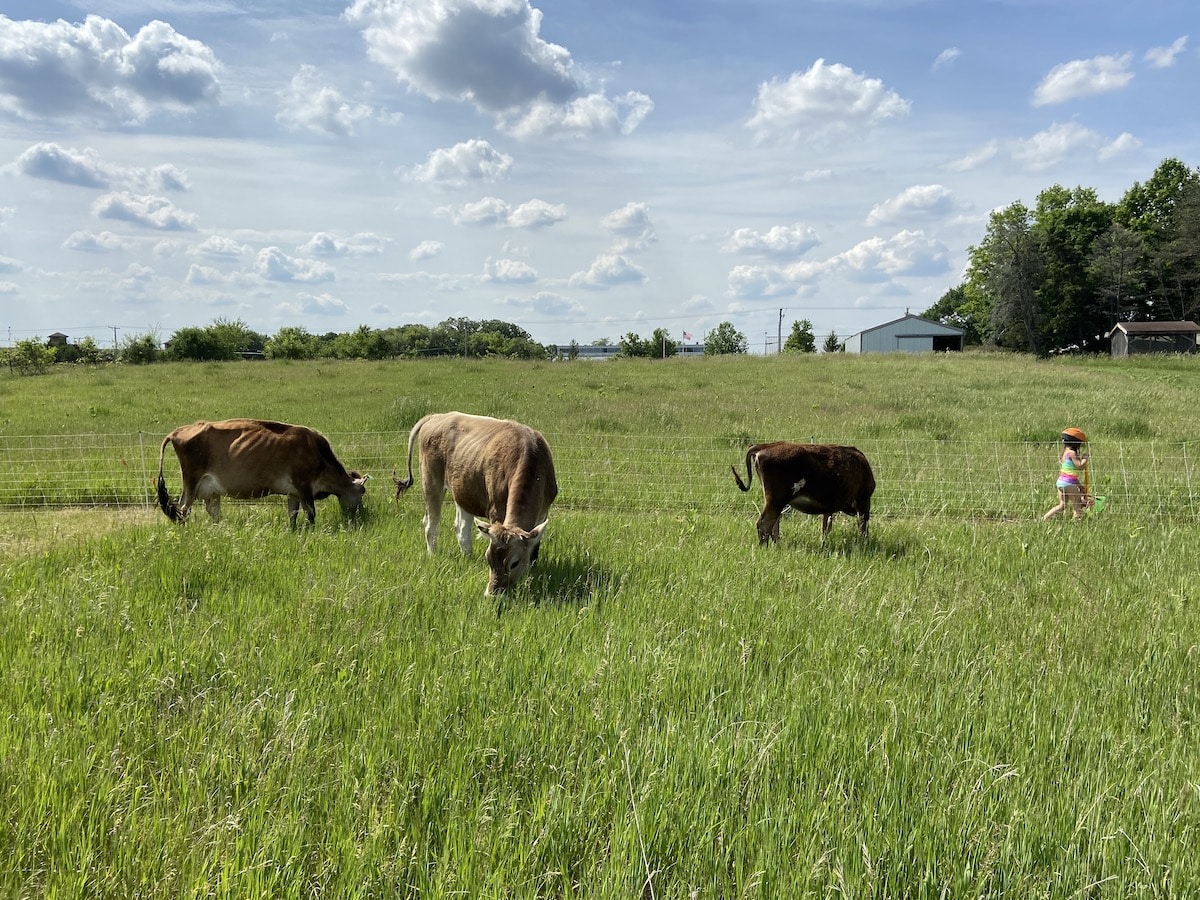
How we got our Jersey milk cow?
We met a family with a single milk cow and worked our way into their weekly rotation of getting milk. She was a Jersey (named Thimble), a heritage milk cow breed, known for their abundant cream content. It was the best milk we’d ever tasted and we loved experimenting with all sorts of new dairy based, from scratch recipes. Like our homemade ice cream and crockpot yogurt. Yummm 😋
One day, Joelle learned when picking up milk that the high school daughter who took care of the cow and milked her didn’t have time any more to milk and needed to rehome Thimble. Joelle’s quick response of, “Oh, I’ve always dreamed of having our own milk cow some day!” was a tad premature considering we had never milked a thing in our lives.
But when she came home and told me about it, I had a hunch it was an idea that wouldn’t simply fizzle. The next month we soaked up as much information on milk cows as we could. It left us wondering how in the world we could integrate milking and caring for a cow into the rhythms and routines of our young family.
Book learning only takes you so far. The rest we’d need to learn as we went. After saying “Yes!” and a single milking lesson, we found ourselves responsible for this 800 lb. lactating mama.
We were reminded along the way that most people just getting into farming wouldn’t start with a family milk cow. Maybe a milking goat would be more appropriate? But Thimble came into our life at just the right time and in just the right way. She brought consistency and confidence to our world when we most needed it and we have never questioned our decision, even when the odds seemed stacked against us.

What is our farm setup?
We have a bit over 5 acres in northern Illinois. There’s a small pole barn with a single animal stall large enough to house a few cows. That stall has a door that leads into a roughly 1/2 acre pasture with a permanent fence around it.
This fenced pasture is where our cows stay all winter. Cows are hearty animals. Our first winter we only opened the barn for them on the extremely cold days – 0 degrees or below. We learned the hard way that this led to our milk cows’ teats getting chapped and cracked from the wind. No fun for anyone!
This year, we opened the barn at more like 20 degrees or below and have not had this issue at all.
From roughly May through November, when grass is growing, we have the cows on pasture. Our back field is unfenced and roughly 3-1/2 acres. We use a rotational grazing setup with moveable electro netting fence where the cows move to fresh pasture about every other day.
This system takes a fair amount of monitoring and managing, but both our cows and pasture have responded really well to it. And that size of pasture seems to be right for our 2-3 cows, depending on where we are at with calving and culling.
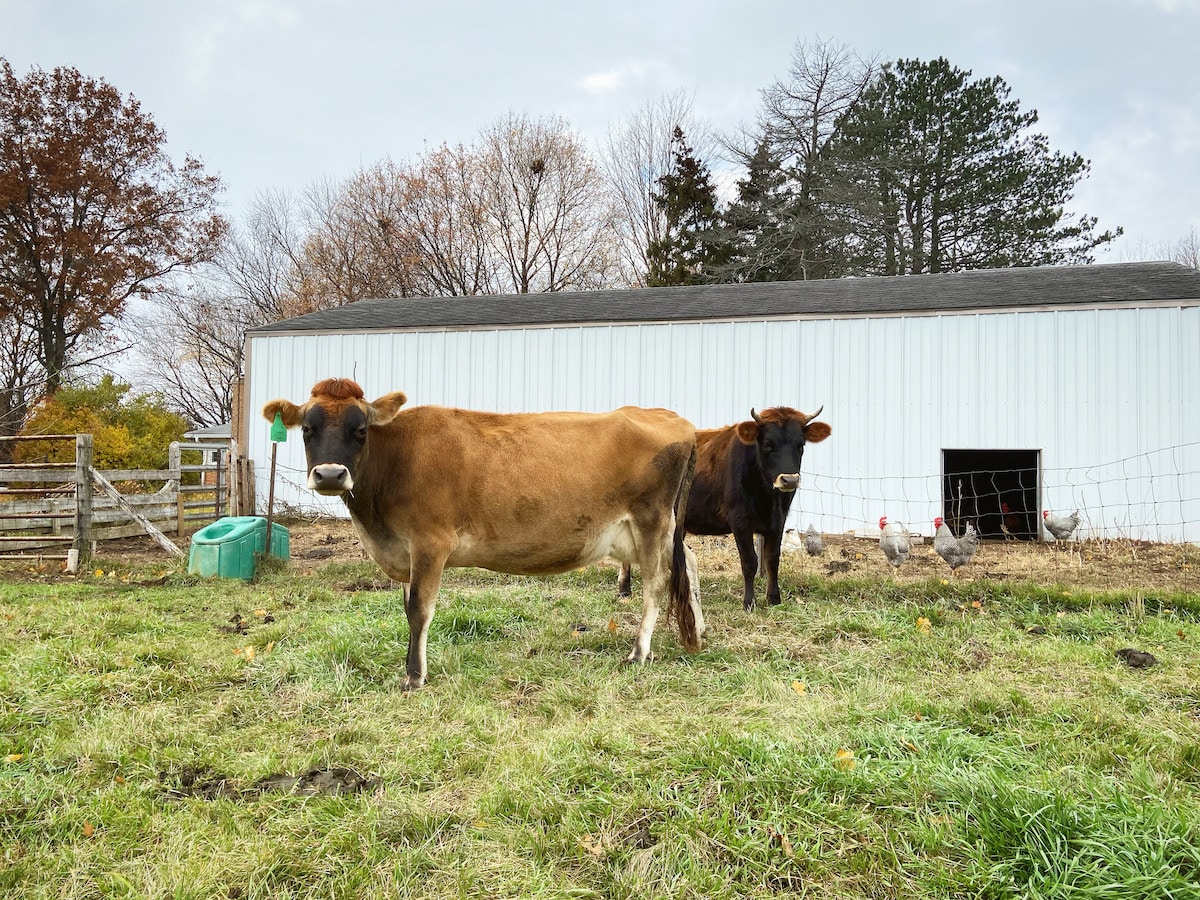
What do we feed our family milk cow?
About two-thirds of the year during the growing season our cows diet consists of fresh pasture. Cows are ruminants, meaning grass, or most anything green, is their natural diet. They will eat grasses, legumes, weeds, herbs, vegetables, and leafy plants like wild grape vines and mulberry trees are especially sought-out treats.
During the winter, we transition them to hay, which is essentially dried, preserved, and bundled pasture. You may have to do some searching for a good hay supplier to last you through the winter. We are SO grateful to have neighbors we exchange milk with in return for hay. Keeps the cycle going!
We also give them a salt block and supplement block that they always have access to for minerals they are not getting from their diet.
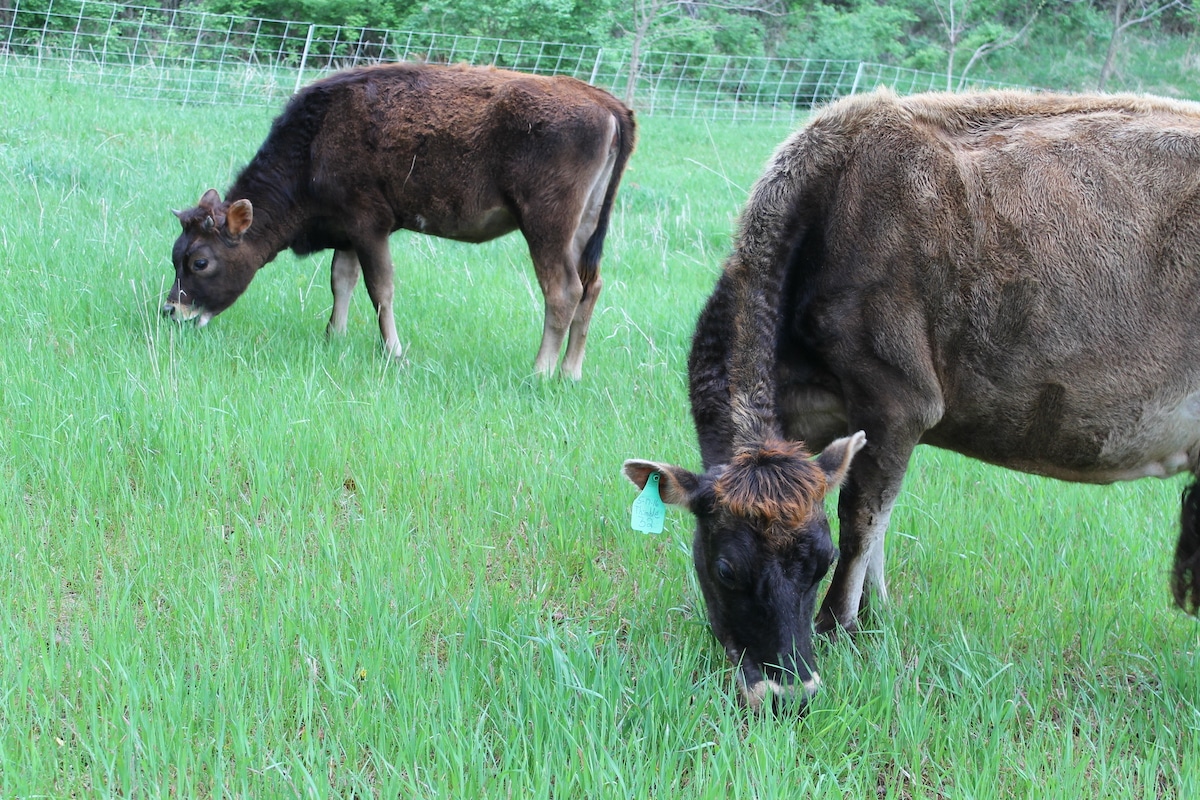
Do milk cows need to be fed grain?
Many would tell you “yes,” but our experience has been that they do not need grain. Our milk cow had been receiving a small amount of grain during milking from her previous owners. The general advice we received was that they needed grain. This is both to keep them conditioned (the farming term for looking good and not too thin) and to keep their milk supply up.
So, we started with grains during milking as well. However, we don’t milk for peak production, and the more we read the more we considered an all-grass diet to be the most natural option. So, we removed all grain from her diet and were really happy with the results. Not only has her milk supply stayed consistent but her overall mood and temperament has improved tremendously.
When milking while receiving grain she was fidgety and we were constantly on milk pail patrol trying to avoid a spilt bucket. Since removing grains, she has mellowed and is as chill of a cow as you can imagine. She almost never moves while milking and it’s been over a year since she’s kicked the bucket!

What is the process of milking and how much time does it require?
We should preface this with everyone has a milking routine that works for them, and it does take some time to learn what works best for you, your family, and your cow. We should also mention that Thimble came to us having been trained to milk only once a day. Most dairy cows are milked twice a day for top production. But for a homestead scale, we have found once a day milking to be just the right scale and commitment of time for our family.
Joelle is our milker and start to finish, she spends about an hour every day milking. This includes:
- Haltering our milk cow and tying her off to a fence post.
- Cleaning her teats and stripping them, which is simply discarding a couple squirts of milk from each teat to clear out any bacteria that may have built up.
- Milking her out fully.
- Taking the milk back in to be strained with a strainer and clean dish towel.
- And all the cleanup of milking equipment.
After some practice and gaining efficiency, the milking part takes only about 15-20 minutes. Starting out, you’ll definitely feel like it’s taking forever and can expect it to take at least double that.
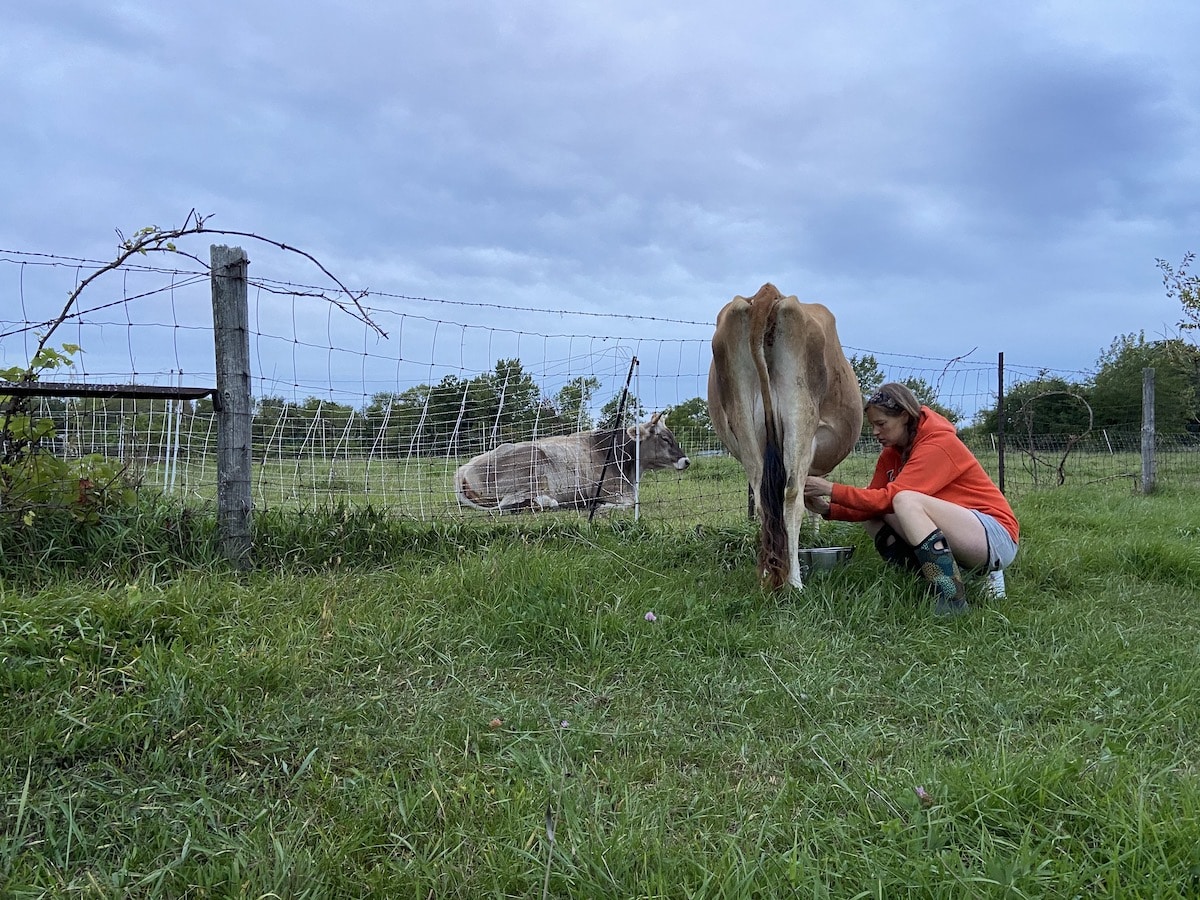
What equipment do you need for a family milk cow?
You will hear a lot of different opinions and answers to this question. We like to keep it simple and portable. Here’s our basic list:
- Halter
- Milk bucket
- Milk pail with lid
- Old rags for cleaning teats and udders
- Bucket for warm water for cleaning (also doubles as your milk stool!)
- A strainer
- Assortment of clean dish towels for straining
- 8 cup Pyrex measuring cup with pour spout that strained milk goes into
- Many half gallon sized mason or milk jars
That is really it. You’ll see lots of different stanchion setups and milk machines out there. But we like the slow pace and natural connection to your animal when milking by hand.
Some of the above links are affiliate links. This means we earn a small commission on qualifying purchases at no cost to you. We are so appreciative of your support!

Don’t you need to get your cow bred to keep lactation going?
Yes! Most milk cows are bred every year. If you’re new to having animals, this part can be very intimidating. But don’t let it scare you. Calving is such a fun part of having a family milk cow!
Cows have a 9-10 month gestation and most commercial dairies have them bred 3 months after calving so they calve every spring. Our experience is that we have not been able to track any signs of heat after three months. With our cows, heat has become obvious only when it’s closer to when the calf weans, which, for us, has been around 10 months after calving. This puts us on a roughly 18-month calf cycle.
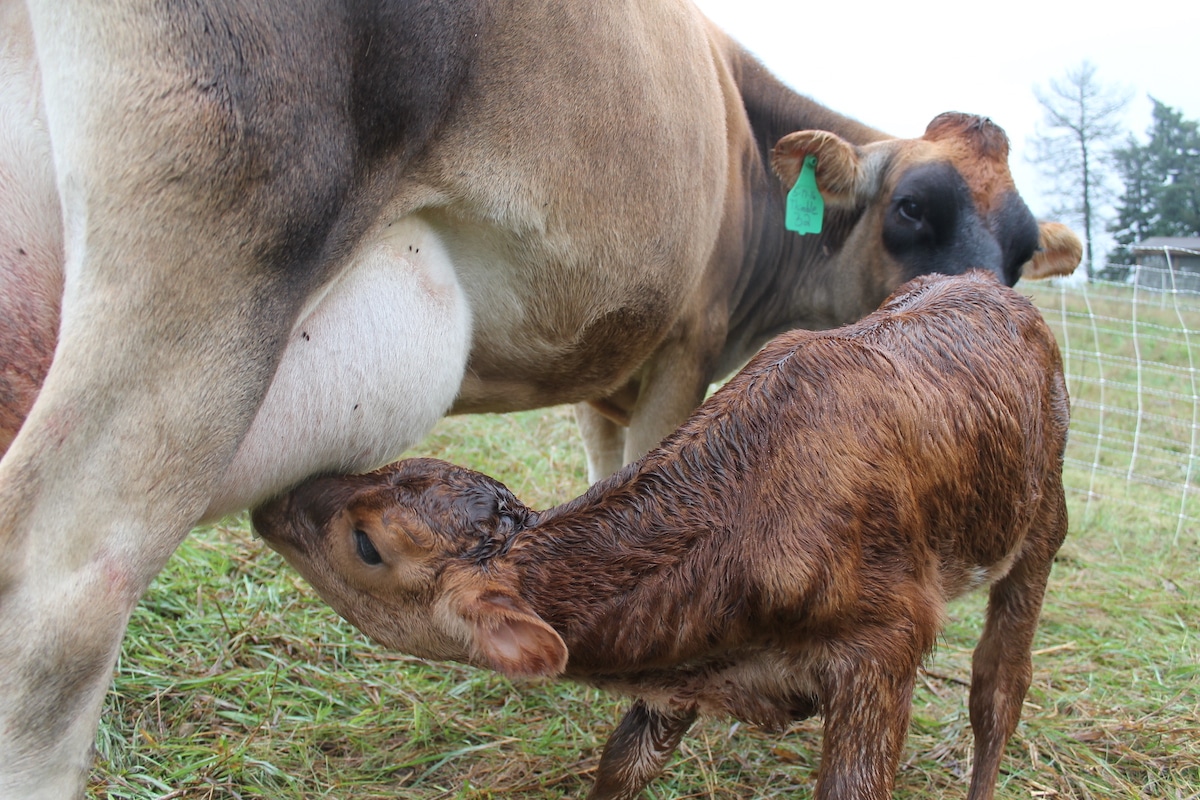
There are two breeding options; 1) breeding with a bull, and 2) breeding through artificial insemination (AI). We have done AI twice now. The first time she had a heifer by luck of the draw. This time, we had a sexed AI done, which we are hoping means there’s a good shot we’ll have a pure Jersey heifer to potentially raise as another milk cow.
Both AI’s we had done by a local dairy farmer we reached out to. They have lots of experience, usually have the equipment on hand, and will likely give you a reasonable price. You can contact your local Vet and I’m sure receive great care and service, but can expect to pay significantly more.
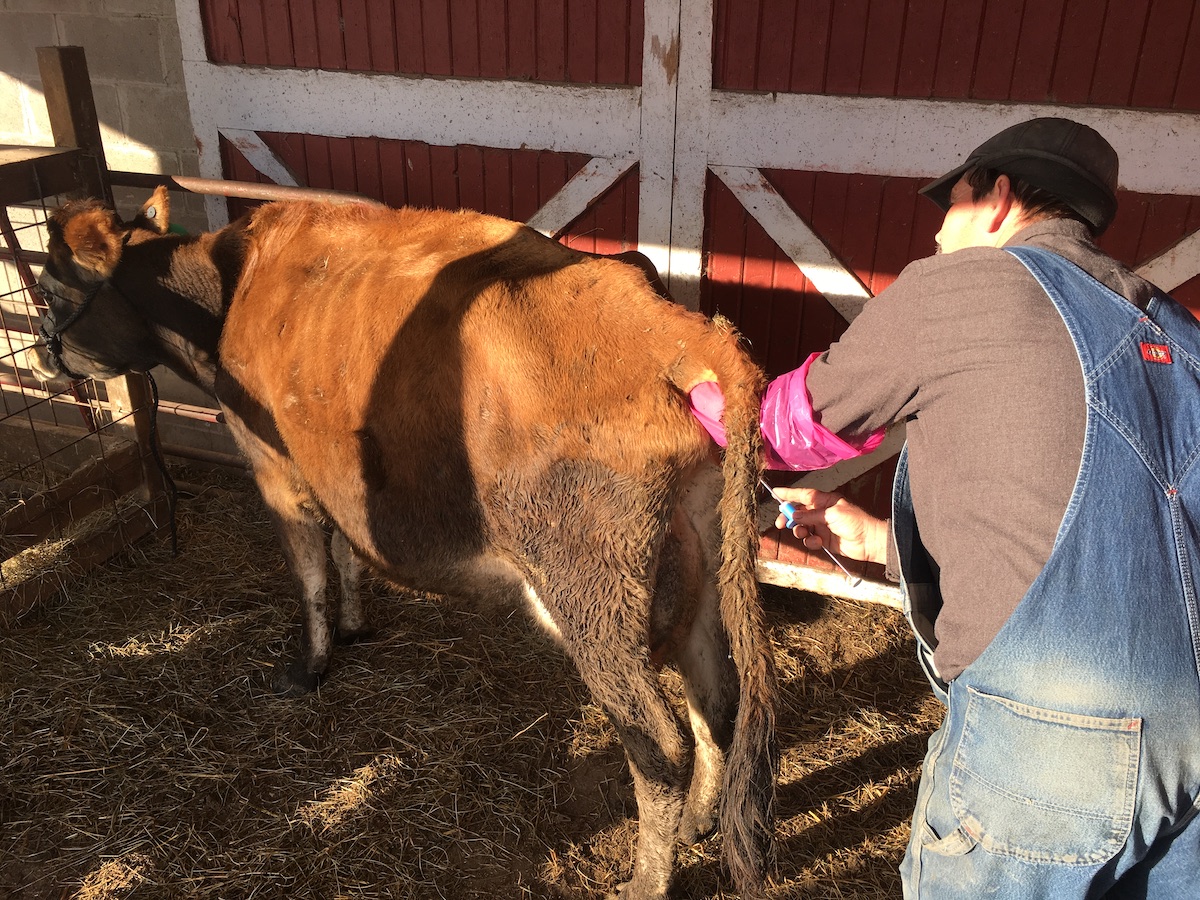
How do you know when your milk cow is in heat?
You just know! Mooing constantly. Pacing the fence. That glazed-over look in their eye. It took us some time to know for sure, but the more you learn their personality and mannerisms, the more their heat cycles stand out. They cycle every 21 days. Another surefire sign if you have other cows is when they mount each other.
How much does it cost to own a family milk cow?
Again, we are going at this from the approach of simple and affordable. Here is the rough breakdown of our costs:
- 3 yr. old lactating Jersey – $800
- Accessories (halter, buckets, jugs, etc.) – $150
- Artificial insemination cost – $50
- Year supply of salt & mineral blocks – $50
- Hay per winter for one cow – approx. $1,000
As we mentioned, we barter for the hay, but the above breakdown has made owning a family milk cow extremely affordable for our family. You may pay more for a good milk cow, but somewhere in the $800-$1200 range has seemed average from doing minimal research.
Depending on what you already have at your farm, you may need to purchase some other supplies too. For example, we bought a used Jug waterer for $350, that our animals share and is heated for a winter water source. We also have a couple other water troughs we’ve purchased along with a fair amount of used Premier 1 electro netting and supplies we’ve picked up. We’ve probably spent around $1,200 on moveable fencing, but saved a ton buying used.
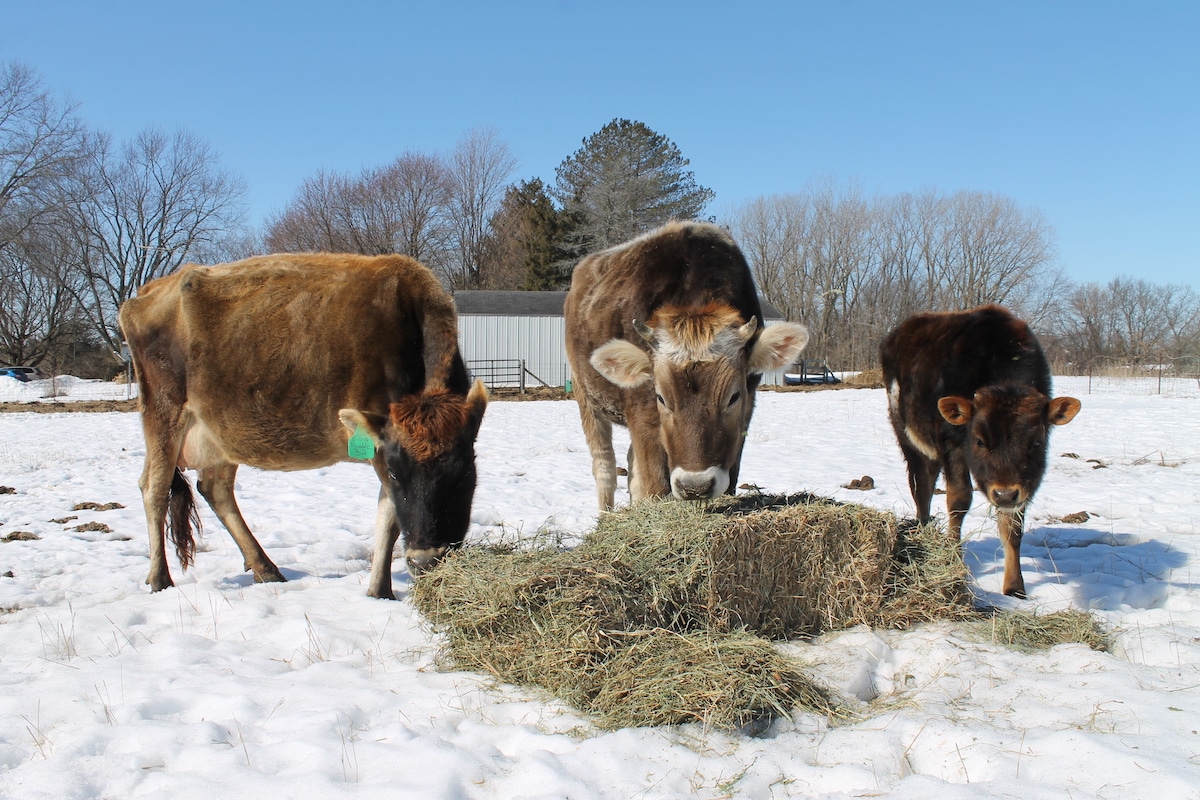
What do you get from a family milk cow?
We get around 1.5 gallons of milk every day. This can vary significantly based on breed of cow, diet, and other factors. But for our family of 5, this is a perfect amount. With it, we always have fresh milk to drink and enough left over to make a steady supply of butter, cheese, yogurt, ice cream, and any other dairy treat we fancy. We don’t need to buy any of these items from the store.
That amount also allows us to be generous and share any extra we have with family, friends, and neighbors. The community of people who appreciate raw milk are our favorite people to get to know!
The continuous breeding cycle of a milk cow also gives you a calf, which can be raised for meat or another milk cow. We already have one calf we raised and is now in the freezer and another scheduled to be processed this fall. The current calf we are expecting to arrive in the spring will be a pure Jersey that we are considering raising as second milk cow, or selling as a milk cow.
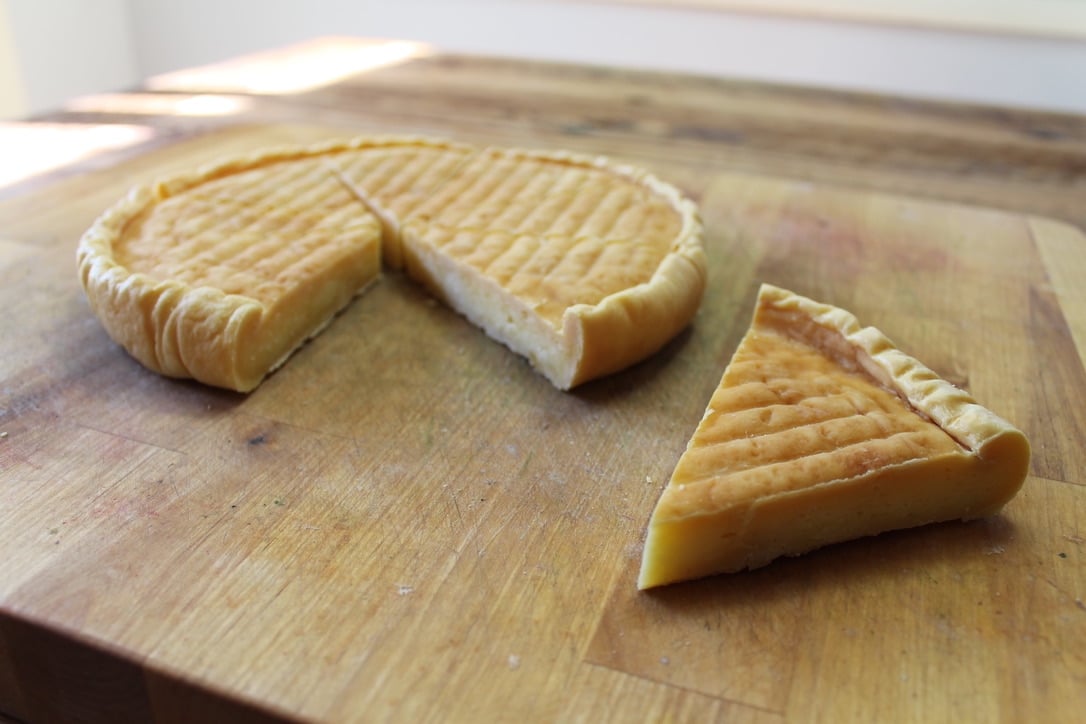
Is a family milk cow right for you?
If you’ve gotten this far, you are probably in the serious download stage of milk cow information and trying to decide if it is right for you. Our hope is that this basic overview has given you a realistic picture of the costs and commitments involved.
We don’t know your situation, but we can honestly say it has been one of the best decisions we have ever made. Our milk cow, Thimble, is like part of the family and it’s nearly impossible to imagine life without her.
But you probably still have more questions! Or maybe something you read wasn’t clear. We want to hear from you! Please drop a comment below and reach out to us. We’d love to interact and help you make the right decision for your family.
Happy milking!
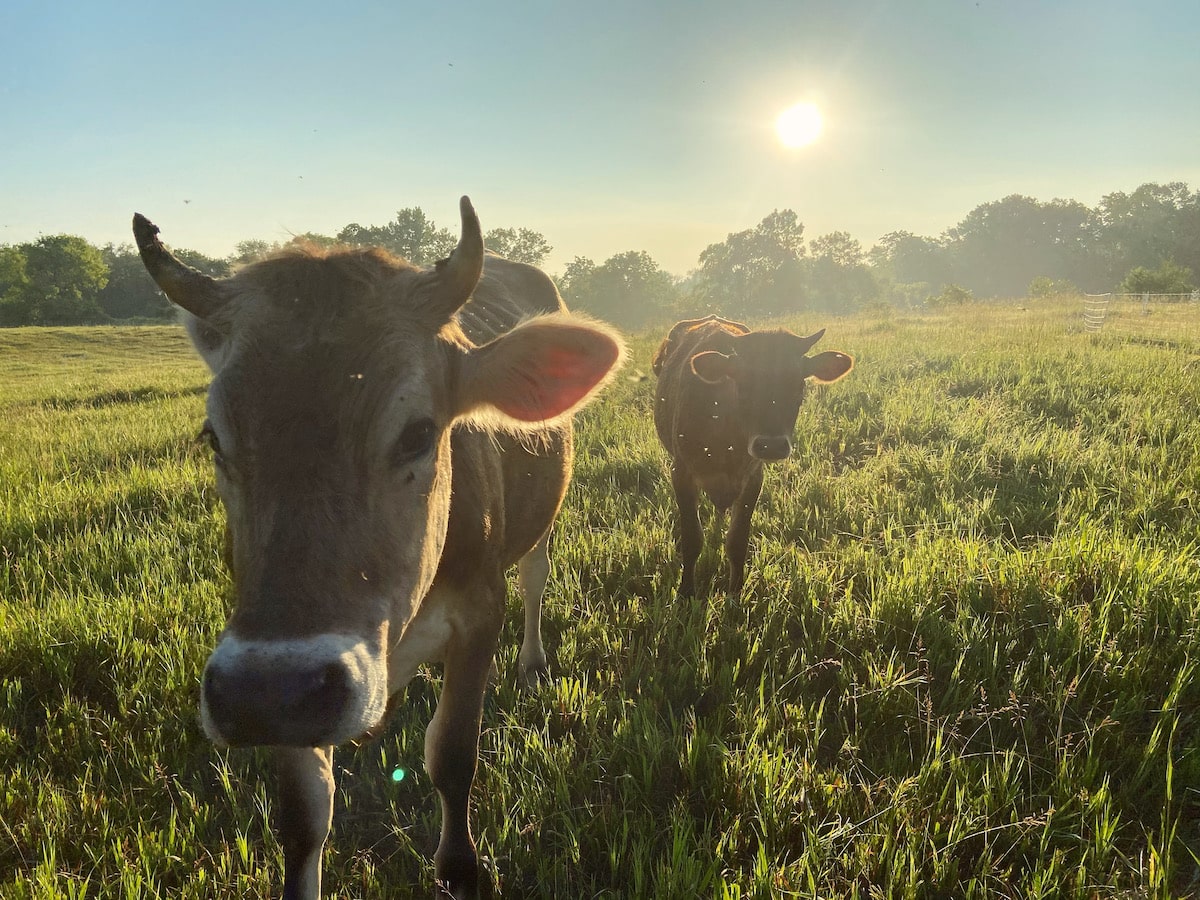
Want more gardening and homesteading inspiration?
This post is part of a collaboration with other homesteaders doing really sweet things to live life from scratch. We’d love for you to meet them!
Krista Dowding from Hilltop in the Valley – How To Start a Homestead for Special Diets
Janelle North from Crowded Table Farmstead – What You Need to Start Garden Seeds Indoors
Hollyn Franklin from Our Simple Graces – How To Start A Suburban Homestead
Ashley Bremer from The Funny Farm Assistant Manager – My Family Milk Cow is Calving Now What
Anna Bodine from Canfield Creations – Homesteader Series -1- Beginner Starting Seeds
Learn more about owning a family milk cow:
How Many Cows Per Acre on a Small Farm
Breaking Down the Cost of a Family Milk Cow
Simple Cow Milking Process for Beginners
Calf Sharing | How to Add Flexibility to Your Homestead
Pin it for later!
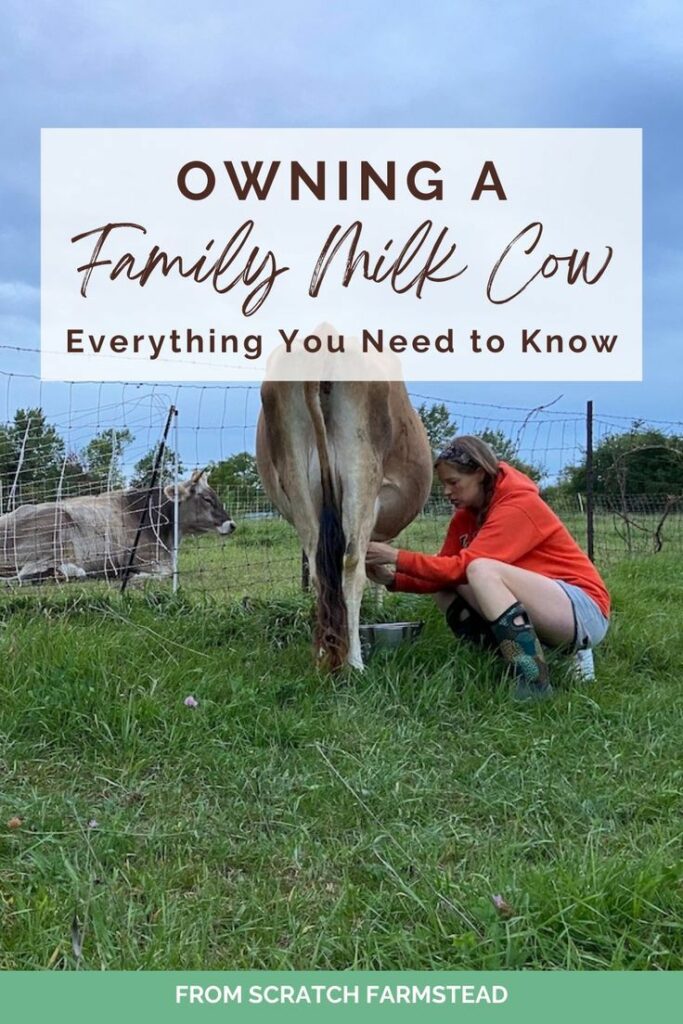
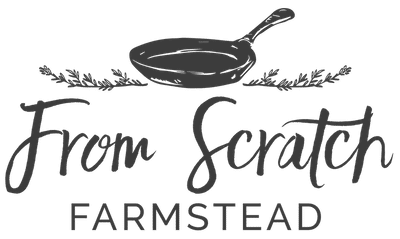
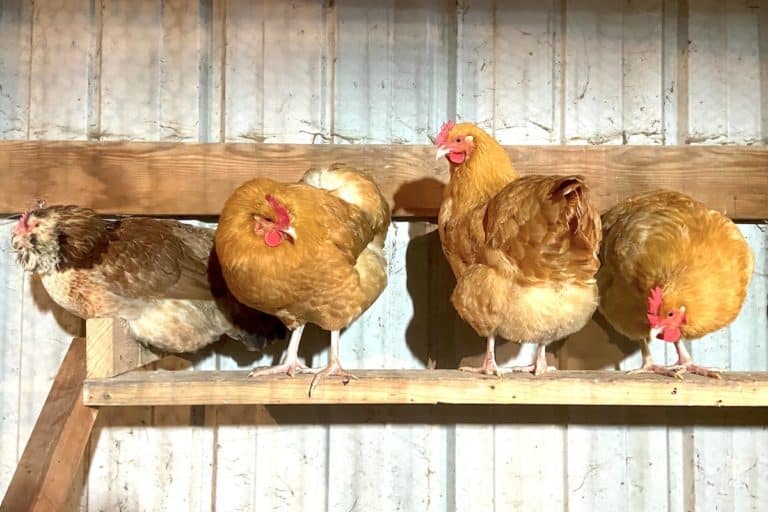


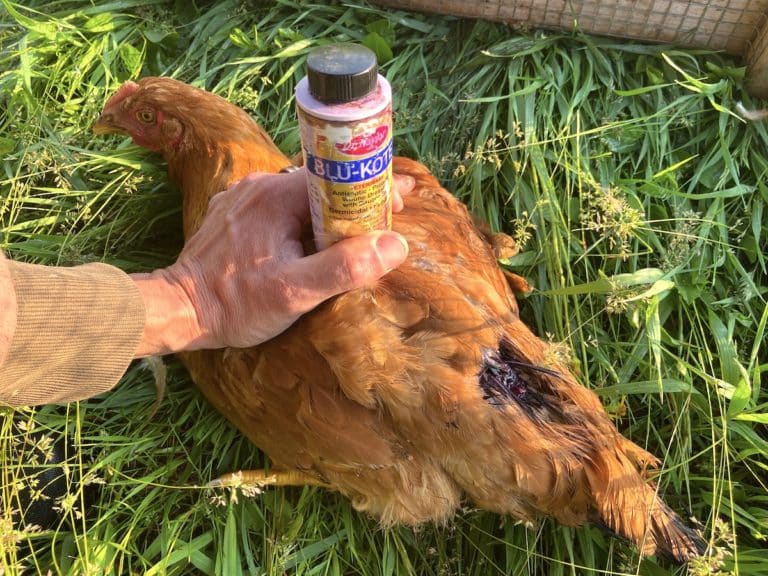
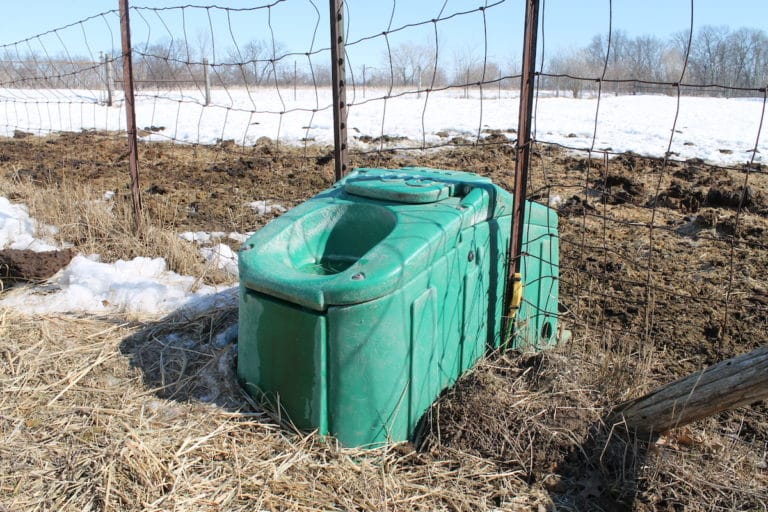
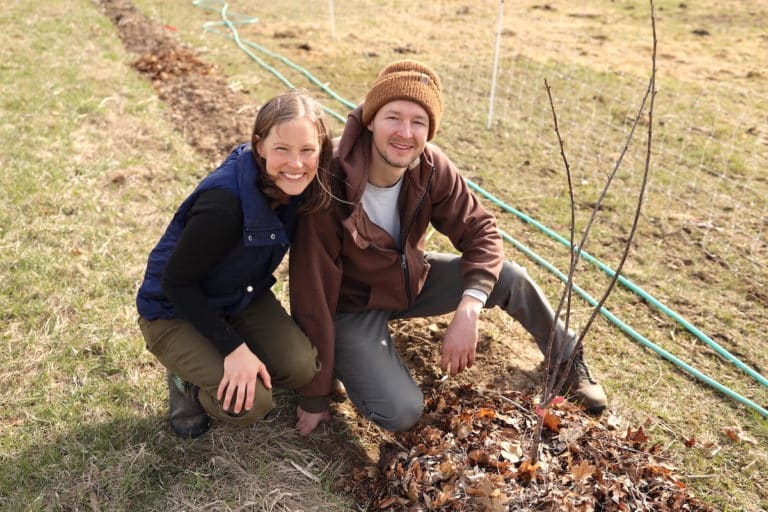
Great info! I am wanting to get a family milk cow in the next couple years so I’ve been sucking up as much info as I can to prepare myself 🙂
Thanks, Krista! Like most things, definitely a labor of love, but so worth it for us! 🙂
Hello!! I’m in northern Illinois, but only have an acre yard. I’m really considering a dexter cow. I obviously don’t have enough for a full pasture, but wondering any advice you can give if you think it is even possible. I learned a lot from you, Thanks!
Hi there! Great to hear from someone in IL! So Dexter would definitely be a good smaller breed option with less consumption needs. The tricky thing with one acre would be managing it so your yard is not constantly being overgrazed. Without seeing the setup, my thought is that you’d want to at least be able to divide it into two paddocks you can rotate between. And then I’d also recommend a 3rd, maybe smaller, paddock that you can have her in when both of the larger paddocks need a rest. You’d need a supply of hay or other feed on hand. Assuming you’re talking about a Dexter for a milk cow, you’d also need to factor in having a calf. If you keep the calf around for more than a few months they’ll also start eating pasture, and a pregnant or lactating mama also needs more nutritional support during those stages. Hope that helps!
Hi! I’m currently studying on cattle farms, I have a question, do you get attached to the calves or not? Since they are raised for meat
Hey there! We do. Saying goodbye is challenging each time. With our small herd you get attached quickly… especially with each having a name. The first calf I dropped off at the butcher I cried – she was such a good caretaker of our milk cow and there was a mutual respect between her and our family. But that also gives opportunity to be profoundly grateful for her life and the nourishment she will provide. Life and death are the hard, but beautiful reality of what we do. All the best to you and happy farming!
This might seem like a silly question but how do you catch the calf in order to separate? Aren’t you nervous momma will charge or something? I want to get a dairy cow and this is one question the internet hasn’t answered, haha
Not a silly question at all! Cows are such routine animals that they almost do the separating for you once you get the routine down! We go the route of moving mama cow instead of the calf. The calf would probably be a bit more resistant to being separated – but I’m guessing over time they’d get the routine down also. When I come out to do evening chores, our milk cow literally just walks up to the gate, I open it, and she walks into the separate paddock on her own. It helps that I’ve already placed some fresh hay in there. But she really just sticks to the routine. That’s during the winter. In summer when they’re out on pasture I might have to go and put her on a halter and bring her into the separate paddock. But mama won’t put up a fight, and the calf generally won’t make a fuss. The only times we’re extra cautious is when either mama or the calf are in heat… you never know when they might try to mount each other so you need to make sure you’re safe and won’t get run over in those cases. Hope that helps! They really are such sweet, calm creatures.
Hi. Thank you for the article! Our family is thinking of getting a milk cow. We live in NC where winters are very mild and temperatures rarely go below freezing. I have two questions. First, would the cow need a barn? Second, if we have a five acre pasture would we need to do rotational grazing or could the cow have the whole pasture?
Hello and yay for thinking about a family milk cow! With more mild temps a barn shouldn’t be a necessity. But when severe weather hits, it’s best to have some sort of shelter. This doesn’t have to be anything fancy. You can do a simple lean-to type structure. There’s shelters on skids that can be pulled around. Mature trees can often provide adequate shelter. Even just pallets or plywood fastened to t-posts to block wind. Something with 3 sides and a roof is best. The other thing you’ll want to think through is calving – there are times where it’s helpful to have a barn, or dry warm space to bring a newborn calf into if the weather isn’t great when they come. With one cow or cow/calf pair and 5 acres, you wouldn’t necessarily need to rotationally graze. But it comes down to pasture management and it will be tricky to keep some areas of the pasture from getting worn out and other areas from not getting overgrown. Cows seem to prefer some spots of pasture over others… at least ours do. Even if you can divide it up into 4 or 8 paddocks or something like that and rotate them through you’ll be a lot better off than if they have constant access to the full 5 acres. We’ve found it helpful to go through and mow down a paddock after they’ve grazed it so everything regrows at an even length. Hope that helps!
Hi! I’ve been loving reading through all your cow posts. Was wondering what you do for hoof trimming? We are planning to buy a family milk cow in a few months and that is a concern of mine, especially with where we live (AK) and not having an experienced vet nearby to help. I heard it’s good to have their hooves trimmed twice a year? Thanks for all your wonderful content. LOVE all the things you do!
Hey! Yay for getting a milk cow! We just got her hooves trimmed for the first time this past year. We held out thought for a couple years until she really needed them trimmed. It was $30 for a local hoof trimmer to come by and do it. But he was a one man show and I honestly don’t think there’s anyone else nearby us who does it. So it can be rare to find. Especially I imagine being in Alaska. Some thoughts… some say that if you never trim their hooves in the first place, then you might not have to. We will be testing this with some of her calves. Also, if they’re on pasture, then you can limit or avoid many of the concerns with hoof issues that might pop up. Depending on their terrain, they may be able to naturally file down their hooves if there are rocks and whatnot available. Or you can put things like cinder blocks in with them that offer an opportunity for them to file down their hooves on. The other thing that I’ll mention is that it is possible to trim hooves yourself. There’s videos out there. Some do it with shears, some with an angle grinder. But if we didn’t have a good affordable option locally, that’s probably what we’d look into. Hope that helps! All the best in your milk cow journey!